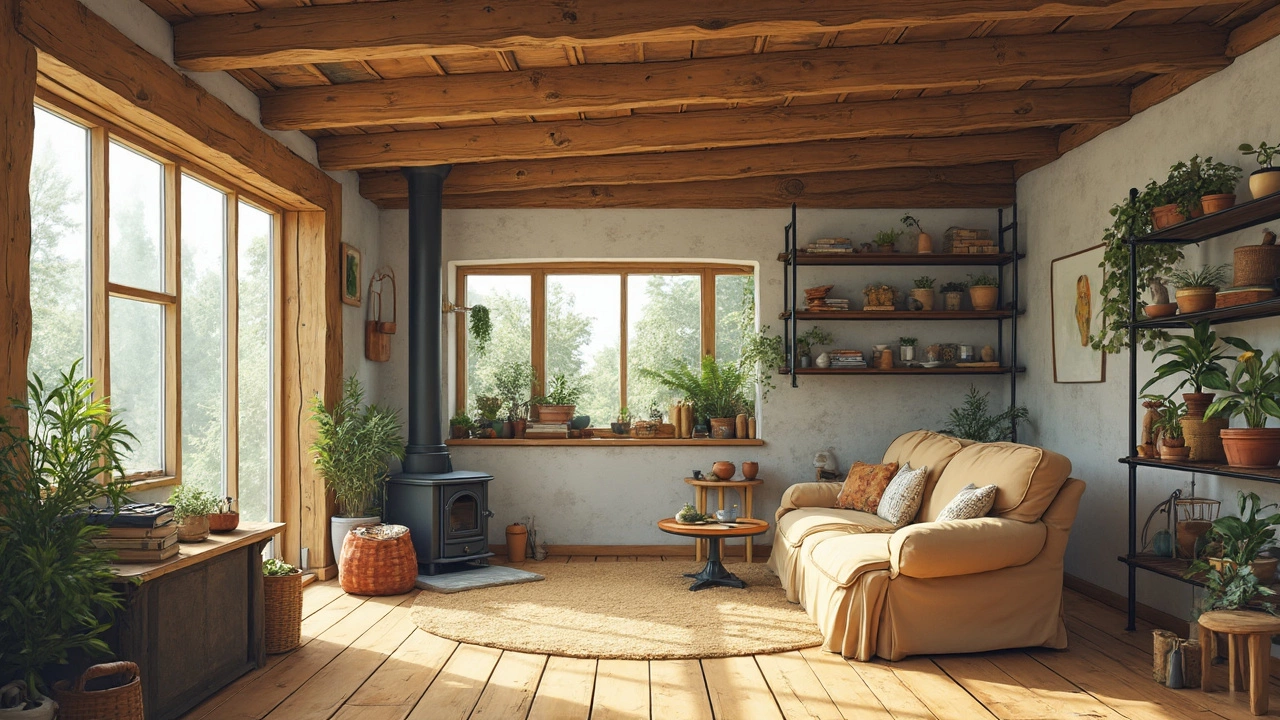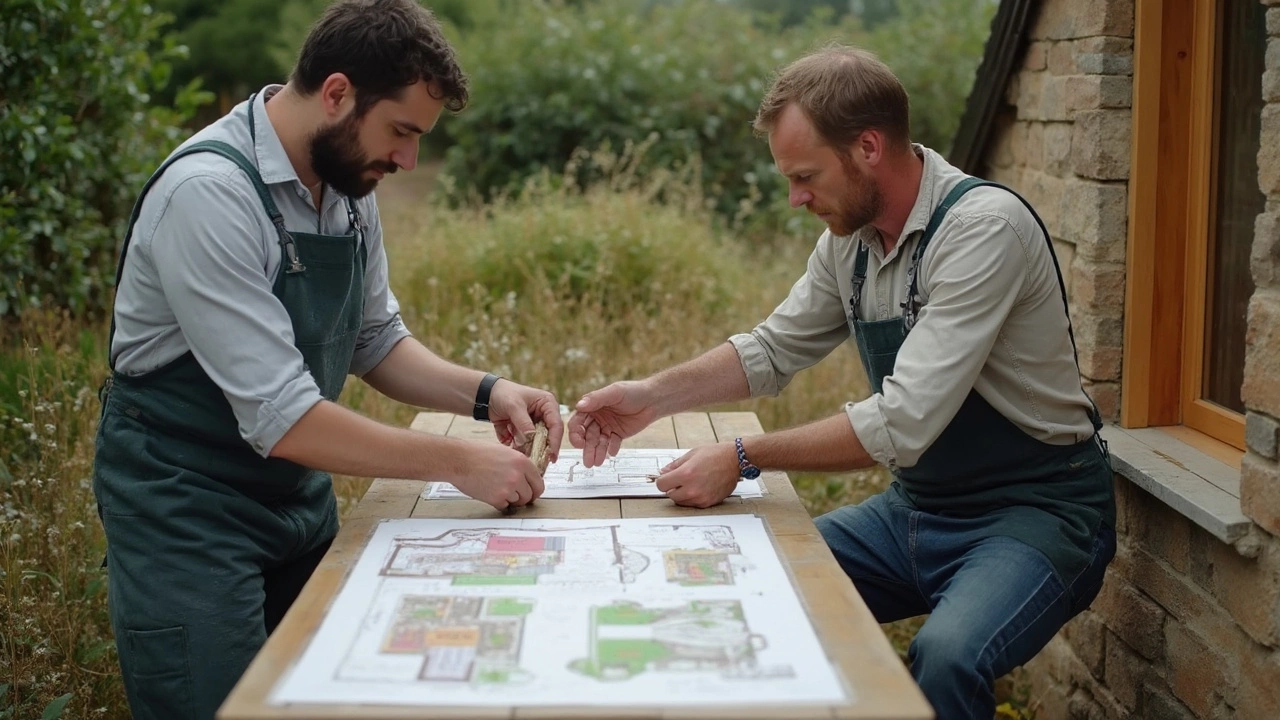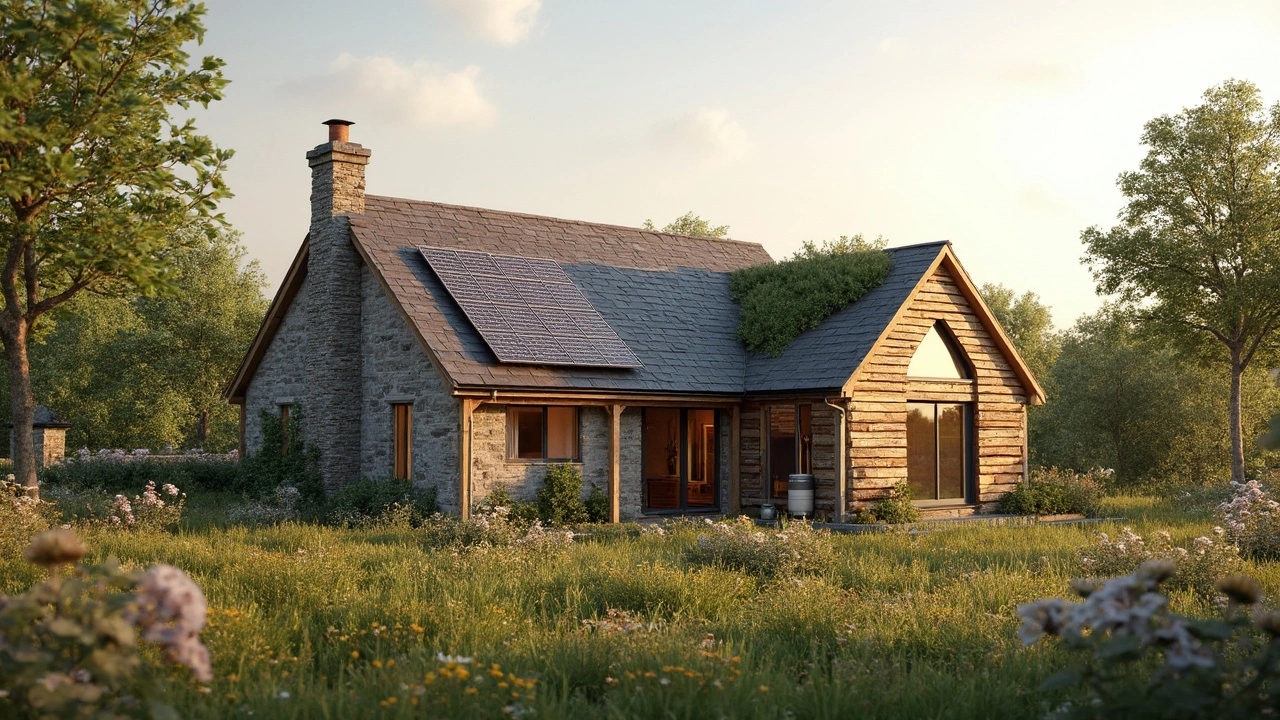If you want to build a cottage that’s truly sustainable, start by rethinking every part of the process. Most people think ‘eco-friendly’ just means adding solar panels and calling it a day. But real sustainability runs a lot deeper—it’s about how you choose materials, deal with waste, and keep energy bills low for decades, not just during construction.
Let’s get one thing out of the way: building anything uses resources. But you can be smart about what goes into your cottage, where you source it, and how you put things together. It’s not just about hippie mud houses or plastic-free dreams. Real-world sustainable building is practical, cost-aware, and focused on what actually works for normal people who want a comfortable place to live.
Want to stretch your dollar and shrink your footprint? Focus on simple strategies that make the biggest difference: pick local materials, skip the unnecessary extras, and design your cottage to work with the land and climate—not against them. Even tiny details, like which way your windows face or how you handle scrap lumber, can make a bigger impact than you think.
- What Does Sustainable Building Really Mean?
- Natural Materials vs. Modern Options
- Design Choices That Boost Efficiency
- Smart Waste Management During Construction
- Low-Impact Living After Move-In
What Does Sustainable Building Really Mean?
Sustainable building is more than a trend—it’s a real shift in how we think about making homes. At its core, it means putting up a place that uses fewer resources, makes less waste, and stands up to everyday living for a long time. Forget greenwashing and trendy buzzwords. The main idea is to balance comfort and practicality with what’s good for the planet.
When building an eco-friendly cottage, every decision adds up. For example, locally sourced materials matter because hauling stuff across the country uses tons of fuel. Even a basic fact: the construction industry is responsible for around 37% of global carbon emissions, according to the United Nations. So, swapping out concrete or steel for renewable resources like wood—if harvested responsibly—can really cut emissions.
Sustainable building is about the whole life cycle of the home. This means you want to:
- Choose materials that last and can be reused or composted at the end of their life
- Reduce energy and water use not just during building, but while living there
- Keep waste levels low by planning carefully and recycling as much as possible
- Focus on designs that fit the local climate rather than fighting it
The best part? You don’t have to make your life complicated. Small, doable steps stack up. Even things like tighter insulation, good windows, and smarter layouts can save a ton of money and resources long term.
So, the heart of sustainable building is about making choices that respect both your needs and the environment, right from the ground up.
Natural Materials vs. Modern Options
When you’re looking at sustainable building, all the hype around "natural materials" can be confusing. Is it really better to stack your walls with straw or clay instead of using more common things like concrete and foam? Here’s the real scoop for eco-friendly cottages: it depends on how, where, and why you choose certain stuff.
Traditional natural materials—like straw bale, clay, hempcrete, cob, and untreated timber—are getting serious attention for a reason. Many are renewable, breathe well (meaning less mold), and keep homes comfortable without power-hungry heating or cooling. For example, straw bale walls have an R-value (a measure of insulation) close to R-30, beating many average fiberglass options, especially in small cottages.
| Material | Typical R-Value (per inch) | Carbon Footprint | Longevity |
|---|---|---|---|
| Straw Bale | R-2.4 | Very Low | 50+ years |
| Hempcrete | R-2.1 | Low | 100+ years |
| Recycled Timber | R-1.4 | Low | 100+ years |
| Standard Concrete | R-0.1 | High | 100+ years |
But before you jump on the mud hut bandwagon, let’s talk modern, too. Things like insulated concrete forms (ICFs), structural insulated panels (SIPs), and recycled steel can slash waste and build time. Many prefab panels now have recycled content and can be assembled quickly, meaning less machinery, less noise, and less disruption to the site.
Local availability is the kicker. A straw bale cottage sounds great, but if you need to haul bales 300 miles, those emissions add up. Sometimes, the most sustainable material is right under your nose—literally. Using reclaimed wood from a nearby barn, or stone from a local quarry, often checks more boxes than shipping fancy "eco" supplies from across the planet.
- Pick what’s plentiful nearby—less transport means a lighter footprint.
- Choose materials that last. Rotting or crumbling walls aren’t green if you need to fix them every few years.
- Dodge toxic treatments or glues. Natural insulation like sheep’s wool or recycled cotton works just as well in many cases.
It’s not about being a purist. The best eco-friendly cottages usually mix and match—use straw bale where insulation matters, stone or reclaimed wood where it fits, and modern panels for speed or budget. Think of your cottage like a recipe. The secret is blending local, natural stuff with smart modern options for comfort and durability.

Design Choices That Boost Efficiency
Getting design right at the start saves you money, energy, and a lot of stress down the road. For any sustainable building project, simple design tweaks can shave off heating bills, lower your impact, and even make life in your cottage more comfortable—no tech wizardry needed.
Start by thinking about where your cottage sits. Place your larger windows to face south (in the Northern Hemisphere) to catch the most sunlight through winter. You’ll get natural heating and tons of daylight, which saves money on both electricity and heating. Overhangs or shades above these windows block high summer sun but still let in winter warmth. It’s called passive solar design, and it’s as low-cost as it gets.
Insulation isn’t just a buzzword. Good insulation in your walls, attic, and even under the floors means your cottage holds onto heat in winter and stays cooler in summer. If your budget allows, go for high R-value insulation—think sheep’s wool, cellulose, or even recycled denim. Sealing up air leaks around doors and windows makes this even more effective.
Compact cottage shapes work best. The more you stretch out your house with bump-outs or unnecessary corners, the harder it is to heat, cool, and insulate. A simple rectangle or square means fewer breaks in your insulation and fewer places for energy to leak out.
Want your cottage to be truly efficient? Don’t forget the roof. Steeper pitched roofs can shed snow fast in colder regions and make room for thick attic insulation. If rainwater collection is in the cards, a straightforward roof shape with gutters makes capture way simpler.
- Stick to open-plan layouts to get airflow moving easily—this reduces the need for fans or air conditioning.
- Place mechanical systems (like water heaters and HVAC) near where you’ll use them, so you lose less heat in pipes and ducts.
- If your cottage is in a hot area, light-colored roofs and walls reflect sunlight and keep things cooler inside.
These design tips aren’t complicated or expensive. Most of the time, they cost nothing extra but can cut energy use by 20% or more, compared to similar cottages built without them. Thinking ahead gives you a space that's cheaper to run and far lighter on the planet.
Smart Waste Management During Construction
Here’s a hard truth: a big chunk of construction waste ends up in landfills. In fact, the EPA reported that in the U.S., construction and demolition made up over 600 million tons of waste in 2018—that’s twice as much as all the municipal trash from homes and businesses combined. Cutting that number down isn’t just good for the planet; it keeps your project tidier and might even save you money.
The first move is to plan your materials right. If you order only what you need, you won’t end up with extra drywall, lumber, or tiles sitting around. Some contractors use a buy-back program with suppliers for leftover or unused materials—worth asking about locally.
- Sort your waste as you go. Set up bins for wood, metal, concrete, and cardboard. Recycling wood scraps and metal gets easier when you don’t mix them up with food wrappers or plastic.
- Reusable materials save a ton of waste. Bricks, windows, even old doors can be cleaned up and used elsewhere. Habitat for Humanity ReStores and other local centers actually want these items.
- Keep an eye on packaging. Building materials often come with layers of plastic or foam. Talk to suppliers about reducing this, or choose brands with returnable packaging.
- Compostable waste is often overlooked. If you’re stripping out landscaping or old insulation made from natural fibers, toss it in a compost pile, not the trash heap.
To really see what you’re up against, check out this comparison of typical construction materials and their waste rates:
| Material | Average Waste Rate (%) |
|---|---|
| Lumber | 15 |
| Drywall | 12 |
| Concrete | 5 |
| Roofing | 10 |
So, what’s the best move here? Keep lumber cutoffs for bracing or blocking. Use drywall scraps for smaller gaps or repairs. For leftover concrete, see if there’s any chance to crush and reuse it for site grading or paths. There’s a payoff in tracking this stuff—less landfill waste and lower costs on your sustainable building project.
Get everyone on board, too. Contractors and workers throw away less when you make it easy for them with labeled bins and clear rules. Some eco-friendly builders even post weekly waste tallies onsite to keep everyone honest and competitive. It works—and the bins fill up slower than you’d expect when people pay attention.
Taking waste management seriously pays off in every part of your sustainable building journey. It’s not rocket science—it’s just a smarter way to build that future eco-friendly cottage the right way.

Low-Impact Living After Move-In
Moving into your eco-friendly cottage is just the beginning. Daily choices matter as much as what you put in the walls. If you want the place to stay true to the promise of sustainable building, keep things practical and consistent.
First up, energy use. The average cottage can blow through about 7,000 kWh of electricity a year, but cutting that in half is possible with basic habits. Appliances with Energy Star ratings—not the old hand-me-down fridge from 1995—make a visible difference on utility bills. Smart thermostats alone can trim heating costs by up to 10%, according to the U.S. Department of Energy.
"A home's environmental footprint is only as small as the habits of the people living there." — Dr. Emily Martin, Center for Sustainable Living
Water waste is another easy win. Low-flow showerheads, dual-flush toilets, and drip irrigation for gardens all save more water than you’d guess. Switching to LED bulbs drops lighting energy use by about 75%. Tiny acts, like air-drying clothes and unplugging devices when not in use, add up over the year.
- Collect rainwater for gardens or landscaping
- Compost food waste for natural fertilizer
- Support local farmers and buy less packaged food
- Swap chemical cleaners for vinegar-based or biodegradable options
Let’s look at some real numbers. Here’s how a few low-impact actions stack up over a year for a small cottage:
| Action | Annual Impact |
|---|---|
| Switch to LED lighting | Save ~570 kWh energy/year |
| Low-flow showerheads | Cut water use by 2,700 gallons |
| Smart thermostat | Up to $180 savings/year |
| Composting food waste | Reduce landfill waste by 500 lbs |
Living low-impact isn’t about being perfect. It’s sticking with easy stuff that actually moves the needle, then taking on more as you get comfortable. Pretty soon it becomes the new normal—and your eco-friendly cottage really delivers on its promise.
